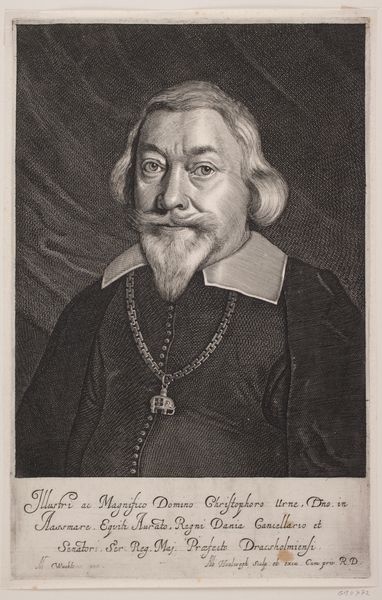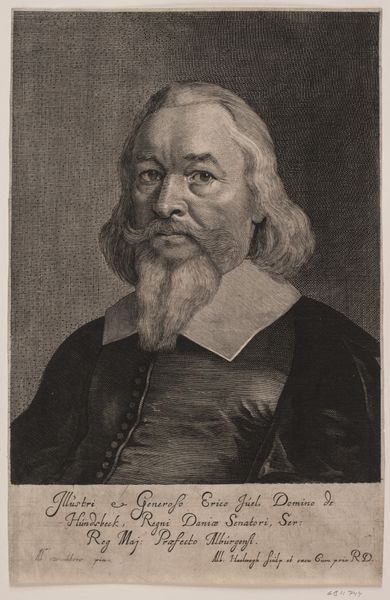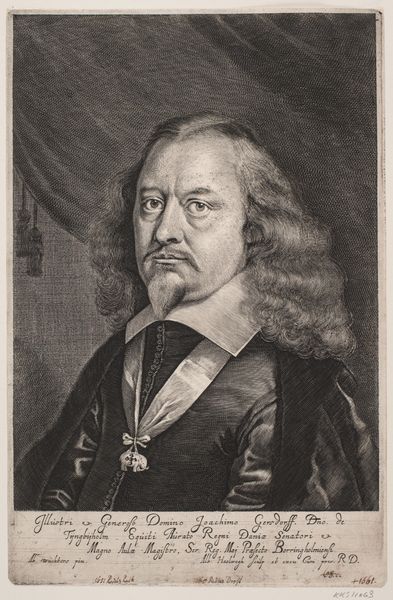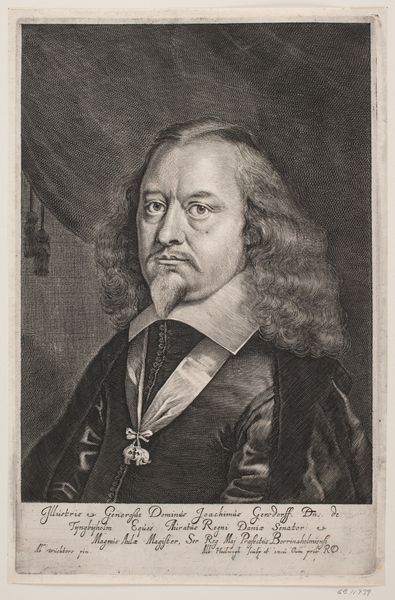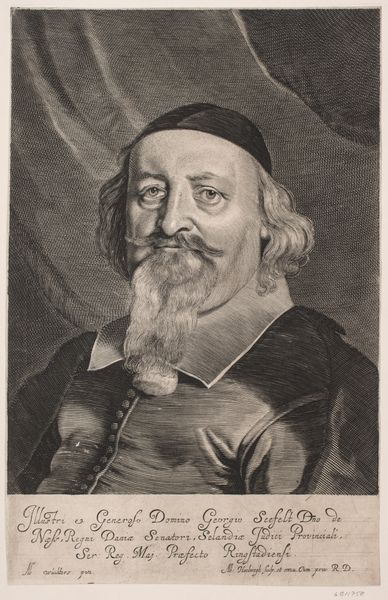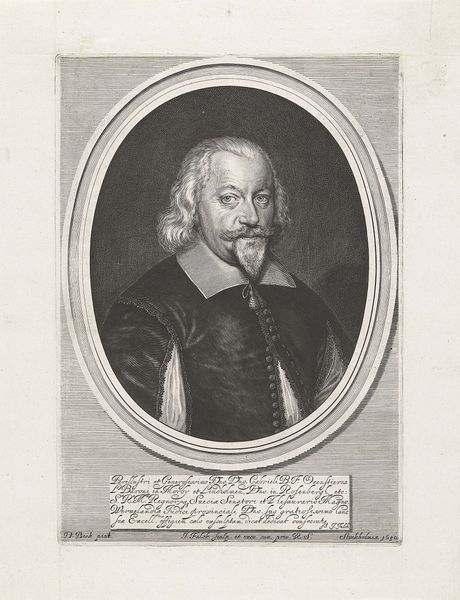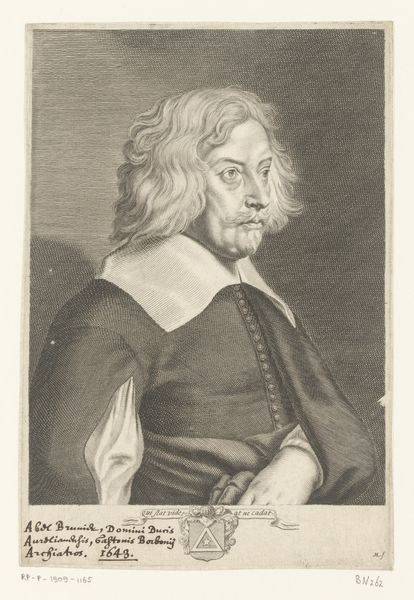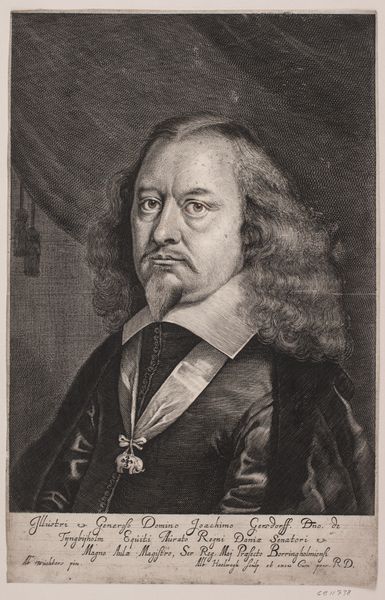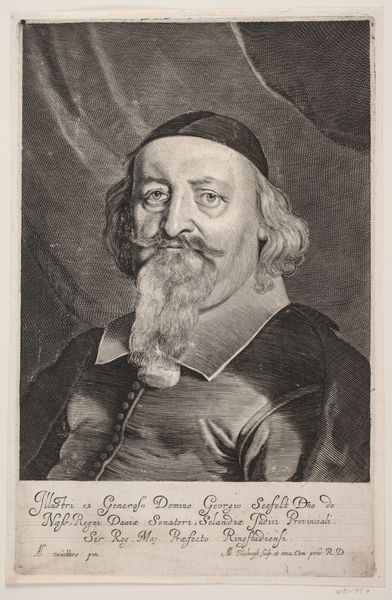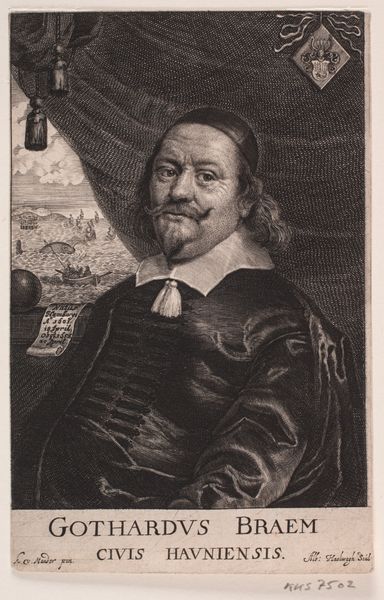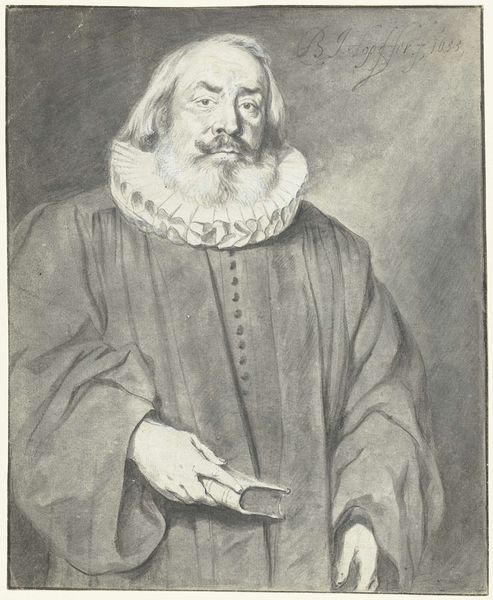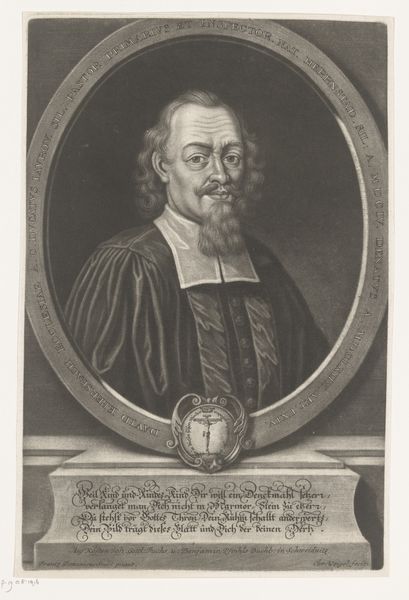
print, engraving
#
portrait
#
baroque
# print
#
engraving
Dimensions: 320 mm (height) x 202 mm (width) (bladmaal)
Curator: Here we have a look at the portrait "Christopher Urne," an engraving crafted by Albert Haelwegh sometime between 1655 and 1659. Editor: Wow, he looks rather imposing, doesn't he? There's a solemn stillness, but also a quiet intensity in his eyes. Almost like he holds a secret. Curator: Indeed. Haelwegh has meticulously rendered Urne's likeness. Notice the sharp contrast between light and shadow, characteristic of the Baroque style, giving the image depth and volume. The hatching and cross-hatching techniques employed create a rich tonal range despite the monochromatic medium. Editor: Right, it's like a study in texture too. You've got the crisp white of the collar playing against the dense, almost velvety darkness of his robe. Then there’s that extraordinary beard—every hair seems accounted for! And that little elephant hanging from his neck. I wonder what that signifies. Curator: The elephant is likely a symbol of status, alluding to Urne’s affiliations with the Order of the Elephant, a Danish order of chivalry. The inscription below the portrait reinforces this, detailing Urne’s titles and honors, and anchoring the image within a specific social and political context. Editor: It makes you think about the power of symbols, doesn't it? How an image, particularly a portrait like this, could communicate so much about identity and authority. Also the engraving shows amazing skill; think of the precision of the lines and gradients... amazing. Curator: Precisely. The success of Haelwegh’s engraving lies in its skillful use of formal elements to articulate complex social meanings. Editor: It is hard not to see something interesting here. Overall a masterful piece, though perhaps a little heavy for our modern tastes, a great demonstration of Haelwegh's impressive technique and his understanding of symbolic and historical visual messaging.
Comments
No comments
Be the first to comment and join the conversation on the ultimate creative platform.
